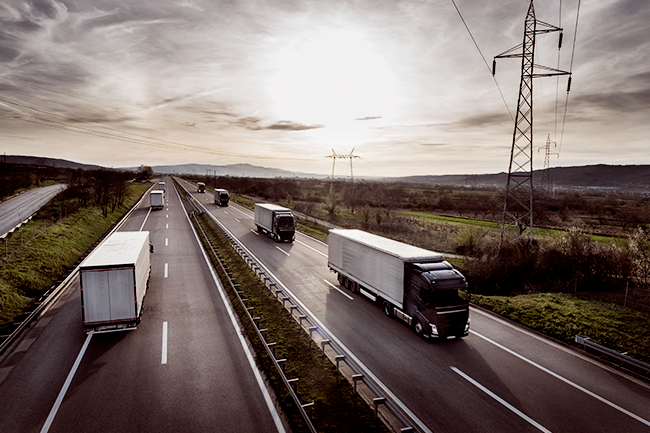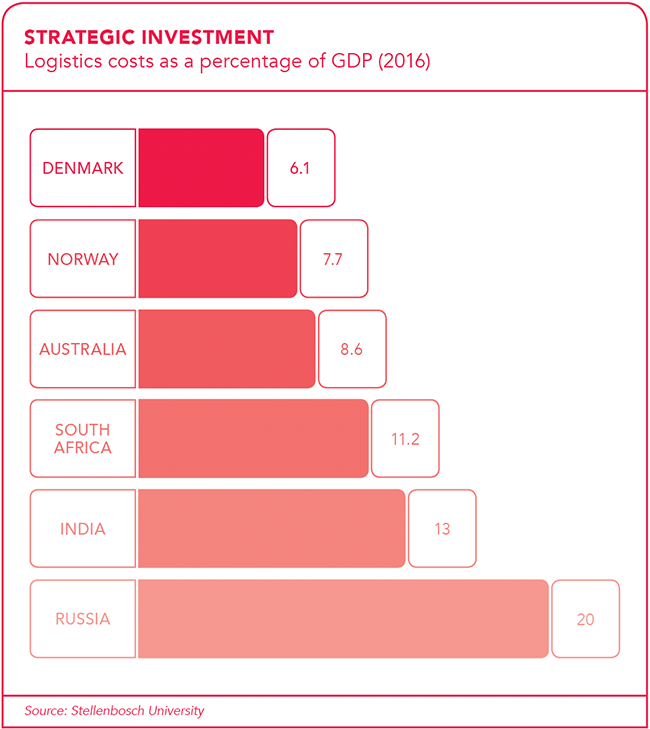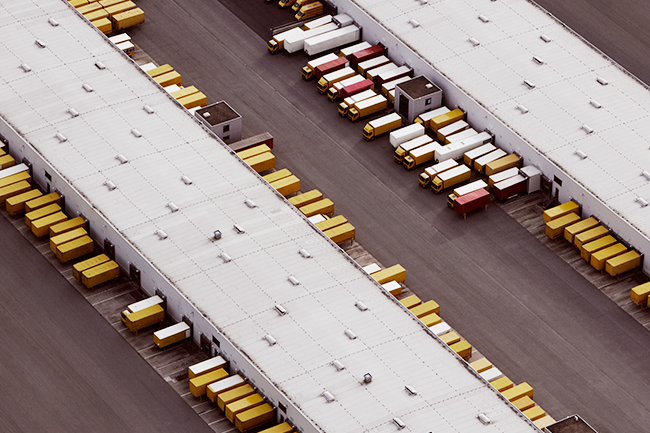At the 7th Annual Eurasian Supply Chain Congress held earlier this year in Johannesburg, the recurring question was, can technology be leveraged to address the challenges and opportunities inherent in the logistics industry? The response was something called Industry 4.0, a term coined several years ago to indicate the Fourth Industrial Revolution, and which includes aspects such as the internet of things, digitalisation, mobile devices, blockchain, big data, analytics and cloud computing. The consensus seems to be that, from a logistics industry perspective, the benefits of Industry 4.0 are bountiful.
Imperial Logistics recently implemented a standardised system for all its road transport operations in Africa and Europe: the CarLo Transport Management System. CarLo is now replacing several transport management systems at the company.
According to Michael Lütjann, chief information officer at Imperial Logistics, this new software solution covers all aspects of transportation management, including planning and controlling, tracking and telematics, quoting, order management, invoicing and accounting, for all modes of transport. Lütjann says the company opted for a forward-looking solution in the shape of CarLo because of its ability to handle enormous volumes of data in a short time.
By enabling Imperial Logistics to minimise manual work and integrate smoothly with clients’ operations, the new system will boost efficiency and service delivery, and also help drive clients’ competitiveness, says Lütjann. ‘The financial benefits that will be delivered include optimal management of cost and revenue, transaction auditability from start to finish, and a clear view of profit and loss.’ Clients will enjoy greater visibility through portals and have better access to information through real-time tracking, while drivers can connect via an app to the ‘InTouch’ telematics system embedded in CarLo, and in so doing, transmit their status reports.
‘Client service will be enhanced by extended reporting and augmented analytics capabilities that encompass orders, shipments, vehicles and drivers,’ according to Lütjann. The new system proved itself within a few short weeks of implementation, with impressive increases in productivity reported. Next year Imperial Logistics will complete the roll-out of the new system to all the group’s business locations around the globe, to be used by 2 000 employees.
Another exciting development for the company is the opening of the second of its Supply Chain Labs – this one in Cape Town, with the first having launched in Berlin, Germany, in 2016. The facilities enable the company and its clients to leverage evolving technology and digitalisation to drive competitiveness and ensure ongoing market relevance, says Lütjann. ‘Digitalisation is changing the way that we do business and has the potential to transform the logistics industry. Companies that want to remain competitive must embrace and leverage disruptive new technologies and trends, which are establishing new business models and changing well-founded ones.’
Digitalisation workshops, digital readiness training, creathons, hackathons and minimum viable product (MVP) projects are some of the services offered by the Supply Chain Labs. The labs also facilitate product development and support the generation of business plans. ‘We generate networks and connect the right people. Some services are focused on enabling our people to leverage the latest technology,’ adds Lütjann.
According to Marius Barnard, fleet general manager in the transport division of Barloworld Logistics, the company uses MiX Telematics to monitor its fleets. ‘Our in-house developers integrate the data generated by this system to not only meet customer requirements but also provide us with unique analytics regarding various aspects of our fleet,’ he says. ‘Improved network capabilities and modern technology have drastically improved real-time tracking and vehicle monitoring, enabling more accurate vehicle scheduling and ultimately improving service delivery. Furthermore, product improvements and advances in tracking systems lead to less downtime while increasing capabilities and data accessibility.’
How do technology and systems help their drivers specifically? Barnard says the driver-safety systems in use, such as Mix Telematics’ Mobileye, assist in preventing collisions. ‘They make use of advanced detection technologies to measure the distance between other vehicles, lane markings and pedestrians. The system also provides drivers with important and often life-saving visual and audio alerts,’ he says. Similar systems are standard in newer generation vehicles, which include lane change assist, brake assist and collision avoidance, he adds.
With emissions being an important part of performance, Barnard elaborates on the steps that Barloworld Logistics has taken in this regard. ‘Diesel engines have become far more efficient thanks to technology,’ he says. ‘Better-quality diesel with lower sulphur content, more efficient engines and advanced vehicle and trailer design are also making an impact [on] the overall emissions per load.’ He adds that Barloworld Logistics’ current rotation policy ensures vehicles run a single life cycle, meaning they are continually replaced with newer and more advanced models, thereby consistently improving the overall emissions of the fleet.
The performance based system (PBS) vehicle programme currently in place has greatly improved the efficiency of emissions versus ton of payload transported, according to Barnard. Barloworld Logistics operates a fleet of 77 ‘smart trucks’ under the programme. ‘These vehicles are designed around performance rather than conventional dimensional restrictions, meaning that they are able to carry greater loads than normal,’ he says. ‘These vehicles operate under dimensional and/or mass exemption permits, which allows improvements in payloads and efficiencies per ton of payload while reducing road wear.’
The PBS or ‘Smart Truck’ programme closely monitors all performance-based aspects of the 77 vehicles on the road, he adds. ‘This not only includes monitoring the fuel consumption but ensuring absolute efficiencies in terms of highest possible permitted payloads on every trip, enabled by accurate onboard weighing systems.’
Peter Mountford, CEO of Super Group, says the company applies an integrated solutions model that uses two transport optimisation systems – i2 modeller and Roadshow. ‘The systems are fully integrated, for example, into our Warehouse System Dispatcher, and through a communications portal and collaborative exchange,’ he says. ‘All the information is integrated to a visibility platform called MyDashboard – a console that enables monitoring the real-time status of a supply chain, which is available to our clients.
‘It consolidates all the data in a simple dashboard and allows users to click on buttons and see, for example, any orders within the system that have not met the standard activity time requirements in the supply chain solution.’
When it comes to systems specifically developed to aid drivers, Mountford again mentions i2 modeller and Roadshow, and a recently implemented track-and-trace solution. ‘This involves in-truck camera technology that is both forward-facing and facing into the cab,’ he says. ‘The cameras monitor the on-road driving performance and safety elements and analyse the performance and condition of the driver. Our control room monitors vehicles and can look at a vehicle through an online camera, for example, and highlight issues such as driving too close to vehicles in front or very sudden braking tendencies.
‘The in-facing camera is very valuable because it monitors driver fatigue – eyes in particular. Some of the businesses in the group even have cameras that pick up on iris and retina behaviour.’
Fuel specifications are critical to Super Group, says Mountford, adding, ‘We generally rotate vehicles on a four-year cycle, although a lot of our commodity haulage vehicles operate on a three-year cycle.
‘In so doing, all our vehicles are minimum Euro 3 specification. We’ve recently introduced Euro 5 vehicles into the fleet, which require the addition of AdBlue, an emissions liquid that is pumped into the exhaust system. However, this does depend on the availability of AdBlue pumps. We have introduced AdBlue capability at our depots, though this is not always available on the road, which can be a challenge for long trips.’
An area where Super Group excels and has made significant advancements, Mountford believes, is vehicle trailer solutions. ‘We have been able to get lower weight and centre of gravity trailers in place to have a higher load capacity with lower axle weight on the road,’ he says. ‘In the coal business, we have the only nationally approved innovative trailer that takes an additional load of 10% but which measures a 30% lower impact on road surfaces and provides a 12% to 14% saving on fuel.’
The company also makes good use of its collected data. ‘We analyse all of our collected data from the perspective of emissions, green issues, our carbon foot-print and the reduction thereof, as well as all of our driver behaviour statistics and the like,’ says Mountford. ‘Driving patterns are also populated into a driver evaluation system. In fact, some driver performance bonuses are linked directly to on-road driver behaviour.’
There’s little doubt that a well-managed fleet improves efficiency – both on the road and off – and helps control costs, while a good fleet-monitoring system helps to plan driver schedules and manage driver behaviour more effectively. All of this makes the fleet safer on the road and gives the company a distinct competitive edge. And technology, it seems, is a key enabler of all of this.






